JK1SXR
Snapshot 59 No.590-599
599. Daruma
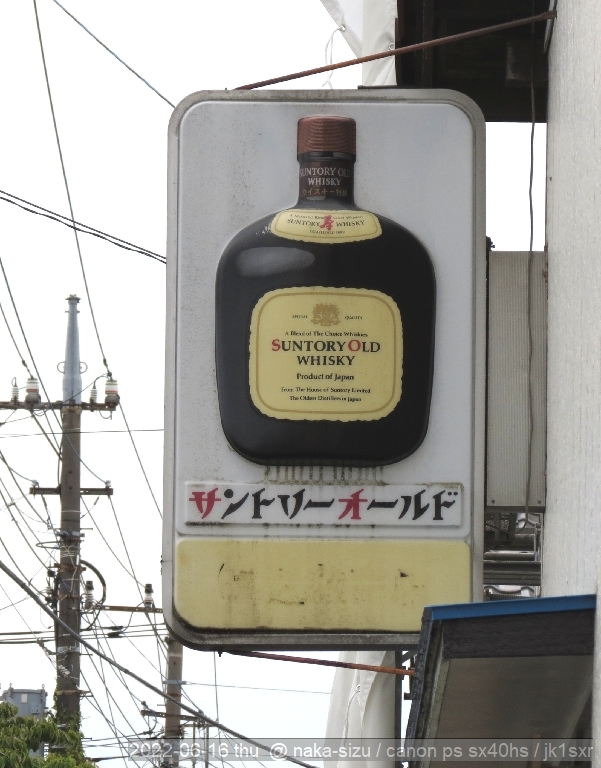 A sign board I happened to see in the next town.
A sign board I happened to see in the next town.
"Daruma (Bodhidharma) which had dominated the liquor market in the 60s and 70s.
Also called, "tanuki" (raccoon dog) and "kuro-maru" (black round).
Still around, but utterly far from the past glory.
♬ "Don don din don shubi da don - -" ♬
Well, it must be completely new for young people. It was the CM song which just fit the atmosphere of that time.
Try this one , Suntory's TV commercial "When the night is coming".
P.S.
It is said that
Composer: Kobayasi Asey
Singer: Sairasu Mozurei (spelling must be wrong) / a researcher and a gospel singer, the then Jyouti University (Sophia univ.) professor.
598. A totem pole
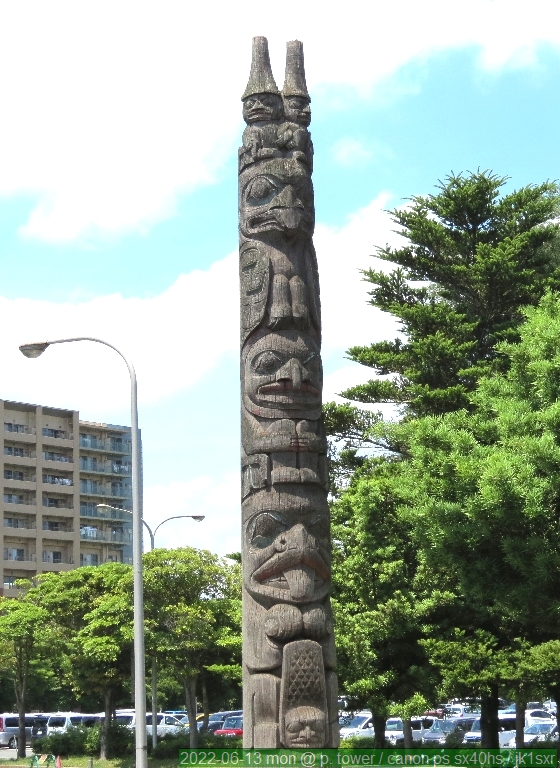
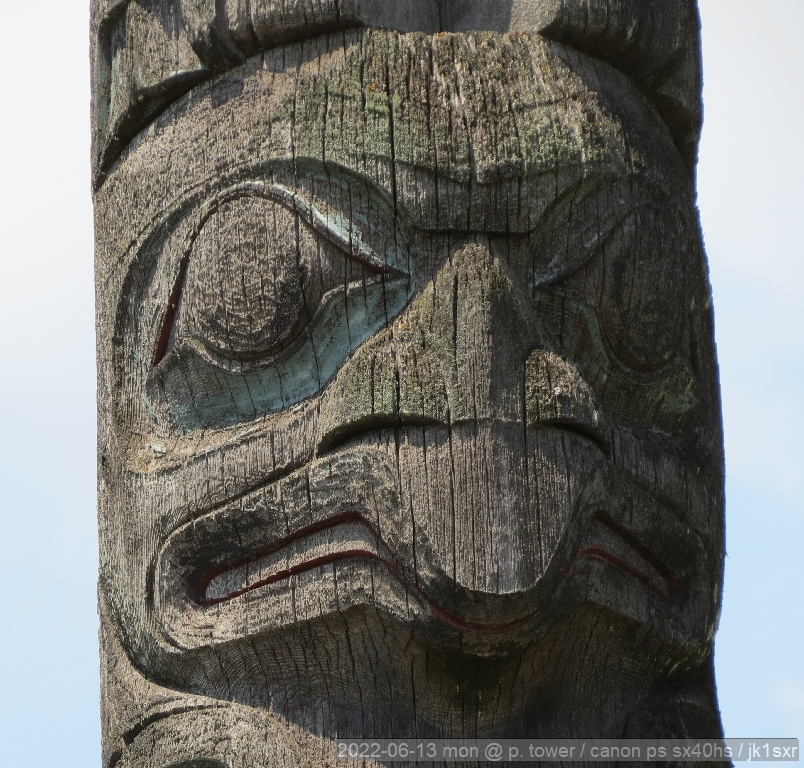 At a square in front of Chiba port tower.
At a square in front of Chiba port tower.
Have not seen much recently, though ubiquitous before.
597. Saboten / shaboten
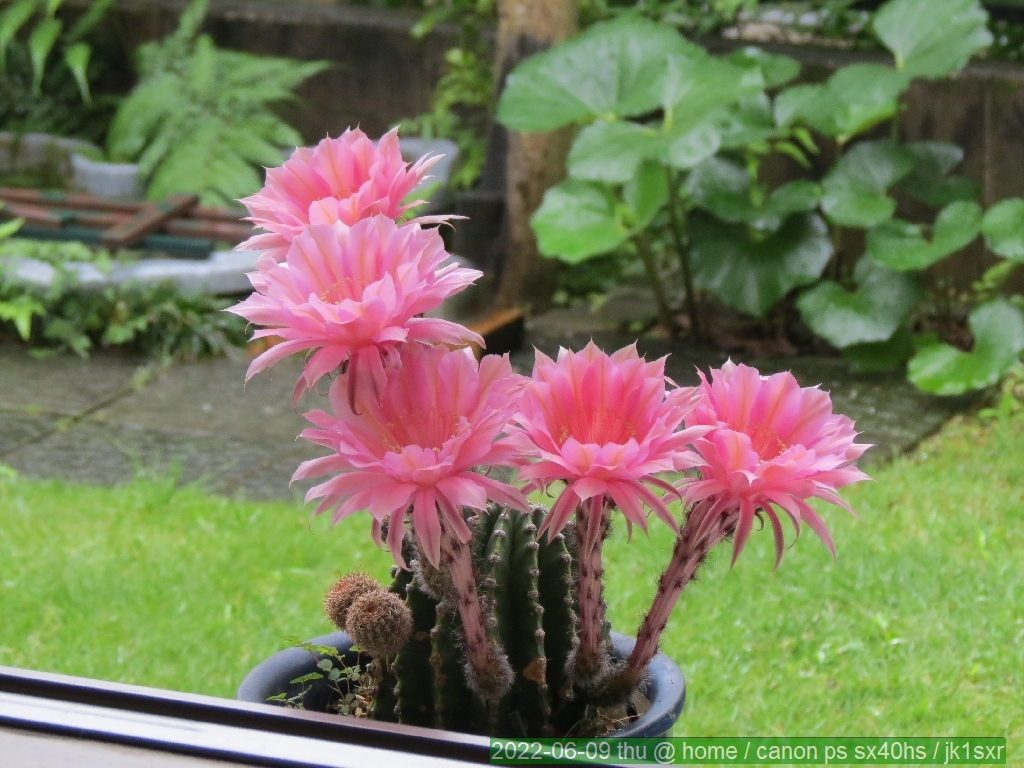 A saboten started blooming again.
A saboten started blooming again.
The word-origin explained in Wiki: Nan-ban-jin# used its sap as soap. Thus, shabon tei (soap stuff).
# Literally means "barbarians from the south", referring to mostly Spaniards and Portugese who visted here for trading in medieval times. They brought many new items into Japan in exchange for silver produced locally.
596. Tractor buff
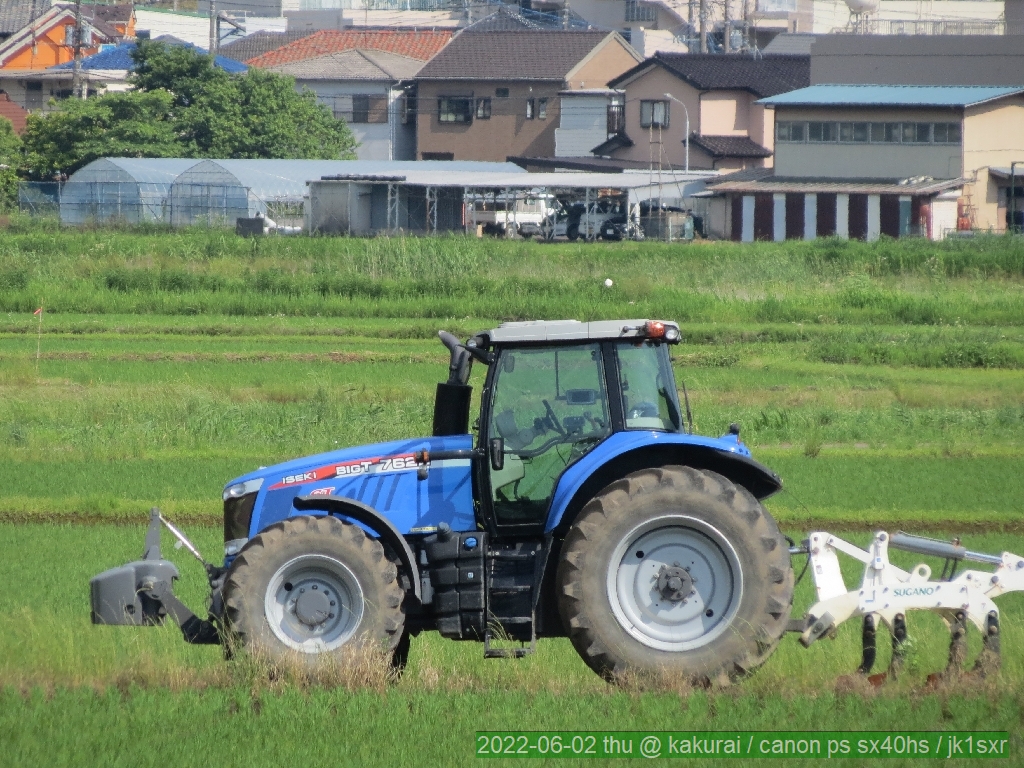 A tractor seen at the usual bicycle path this afternoon.
A tractor seen at the usual bicycle path this afternoon.
Heard that there are a lot of tractor fans around the world and some are collectors of old machines.
Man-size gear-like tires, heavy-sound-blaring diesel-engine, forward and back both 20-or-so-stage transmission, cabin perched on them.
Looks enough to create many otakus.
595. BELLE G
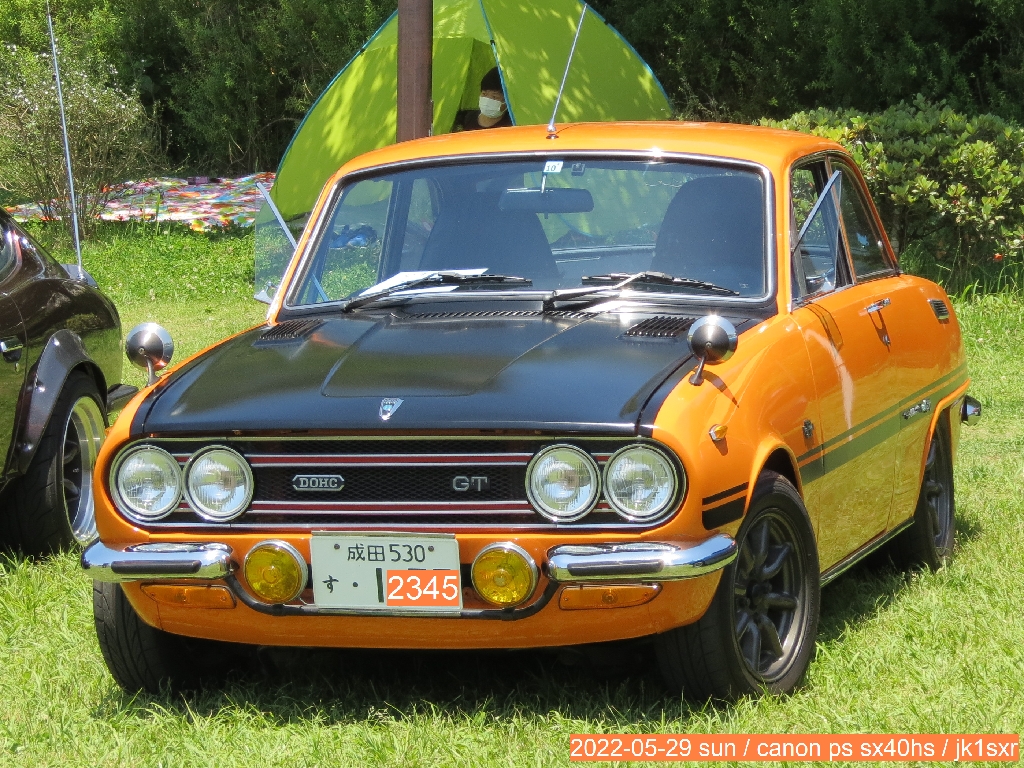 Happened to see this at an attraction at a nearby square.
Happened to see this at an attraction at a nearby square.
Those who know the name of this Isuzu car must be scarce now.
More than 50 years vintage, but looks still working,
In the car market, there is a category called "GT" which definition is ambiguos, not known if it really exists or not.
It is said this car used that word for the first time in this market.
594. Leaves of what herb?
 Leaves caught my eye at the usual walk with Jiro.
Leaves caught my eye at the usual walk with Jiro.
There must be persons who instantly recognize this. But I had no idea at all.
At first, I thought someone played a prank with an ink. But a close look revealed all leaves have the same bat marks.
It is said that;
this is a Mizu-hiki of Tade family, and
the marks disappear around the time when flower spikes appear in the summer.
Another name seems to be;
"Brush cleaning leave of Koubou Daisi#".
#
A priest who established Shingon Buddhist sect in the 9th century.
Well known for his skilled brush works in calligraphy.
Also known as Kuukai.
593. Bass fishing
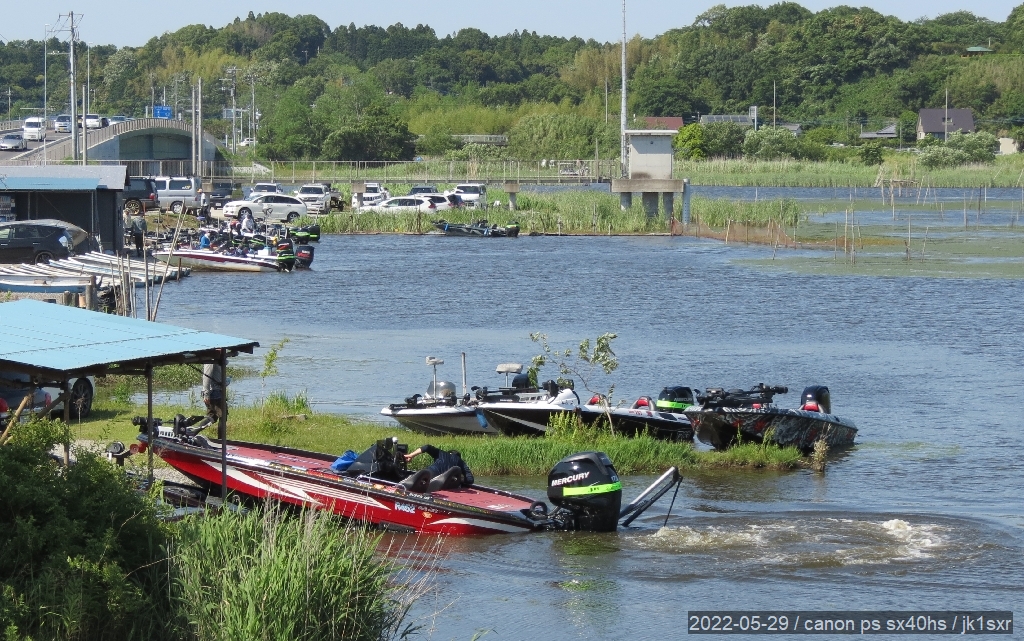 Inba marsh today.
Inba marsh today.
Bass-fishing boats returned.
Fine weather brought many boats into the marsh. They have to wait for being pulled up.
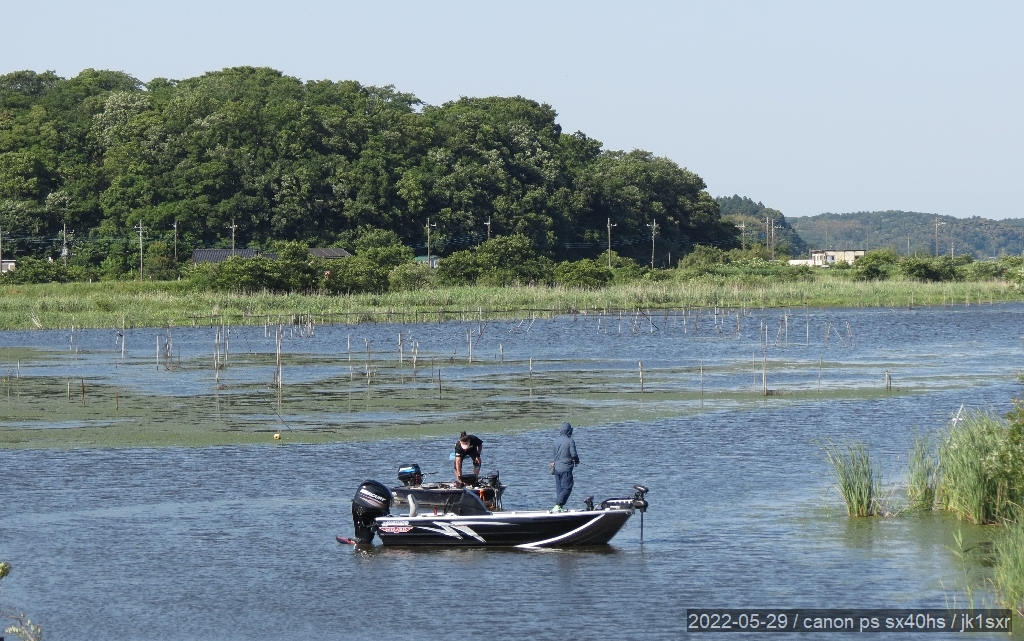 An outboard engine at the stern is used up until the fishing point.
An outboard engine at the stern is used up until the fishing point.
Coming to the point, the engine is cut off, and the battery-powered screw-propeller at the bow moves the boat gently for fishing.
592. Power transmission lines and radios
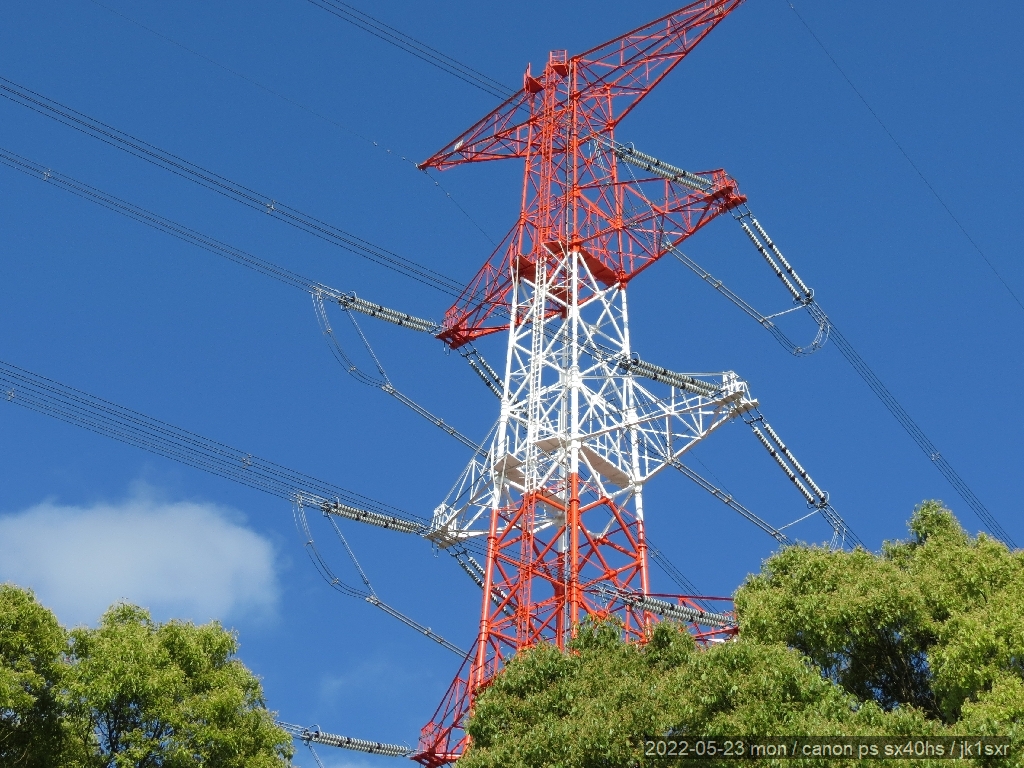
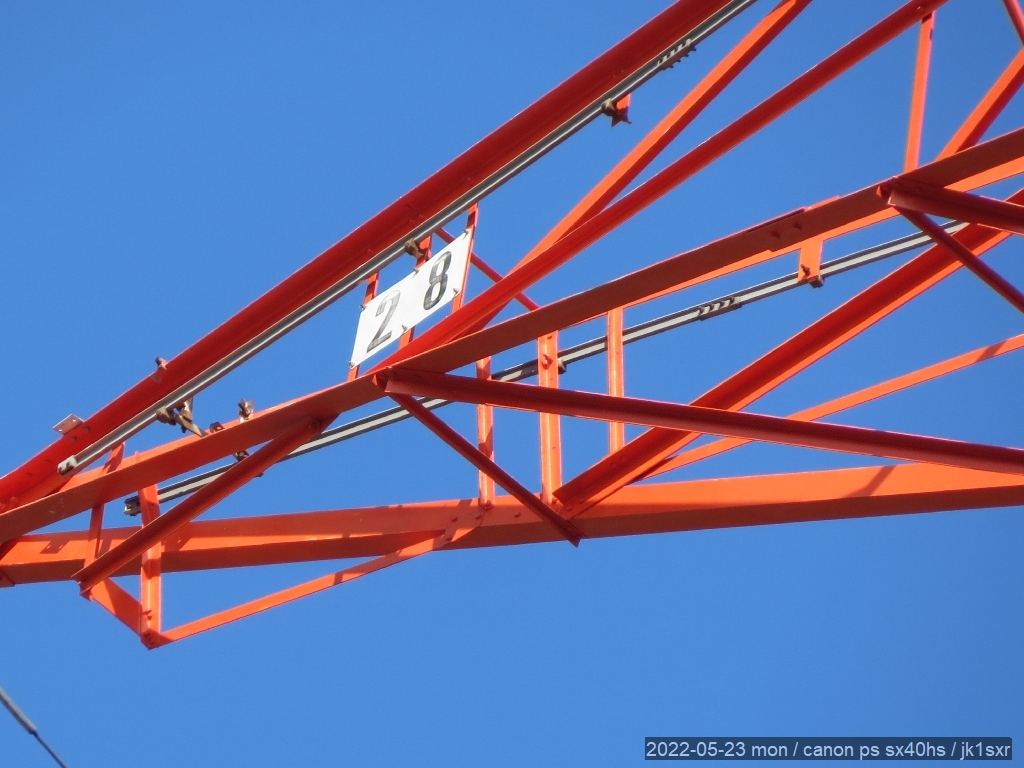
A sequel to the previously listed pylons of Tokyo Power.
This is the nearest tower to my place, Nr. 28th, 370 m apart.
The nearby existence of 500 kV power lines naturally brings about the question on the noise issue. In my HF operation, there is no pratical problem.
In fact, there is a person in our area who has long operated HF radio at the place, the 4th house from the 500 kV line.
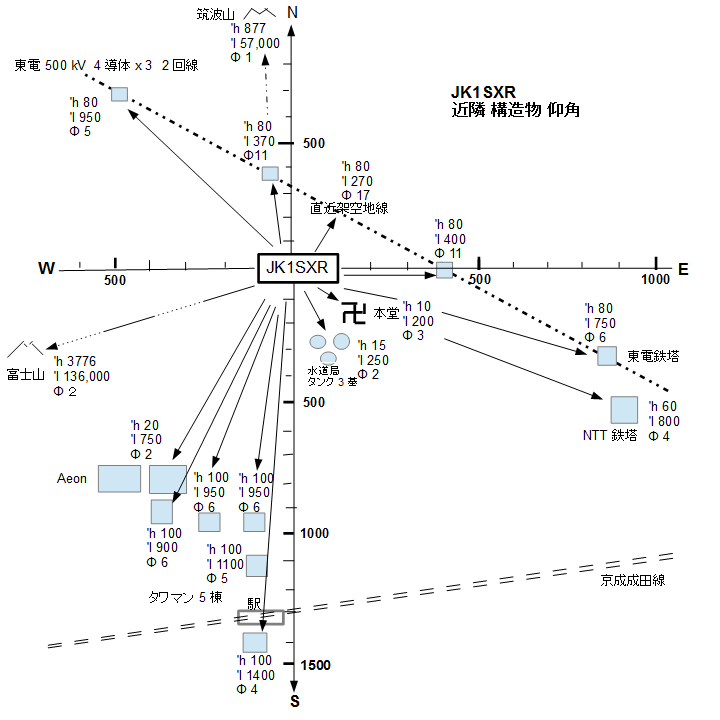 This is a summary of the height, distance and elevation angle of large structures around my place (the same is listed in other part of this site).
This is a summary of the height, distance and elevation angle of large structures around my place (the same is listed in other part of this site).
As the picture shows, the power line exists 270 m apart from my place. The elevation angle of the grounding wires on top of the tower is 17 degrees seen from my place.
No problem on HF as mentioned.
On VHF/UHF, however, I feel there is an issue.
My experience on V, U is limited only for CW operation via LEO satellites.
For example, there are cases;
when a satellite goes behind the power lines, the signals of Russian stations get disturbed for 10 or 20 seconds.
As there is no problem at the angle close to the horizon, I think, this is the effect of this power line (4 conductors, 3 x 2 = 6 and 2 ground wires) crossing the northern sky at the elevation angle from around 8 to 17 degrees.
591. Ta-ue-ki
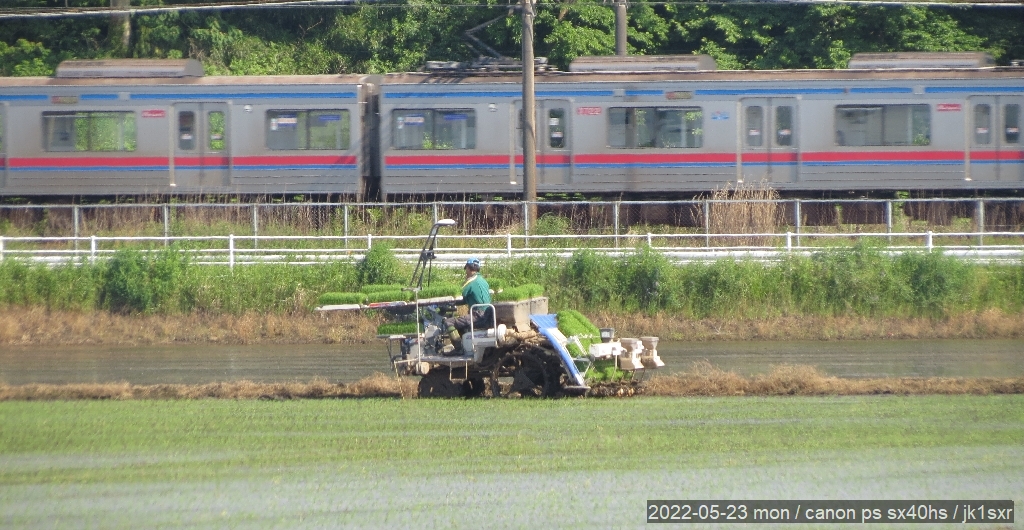
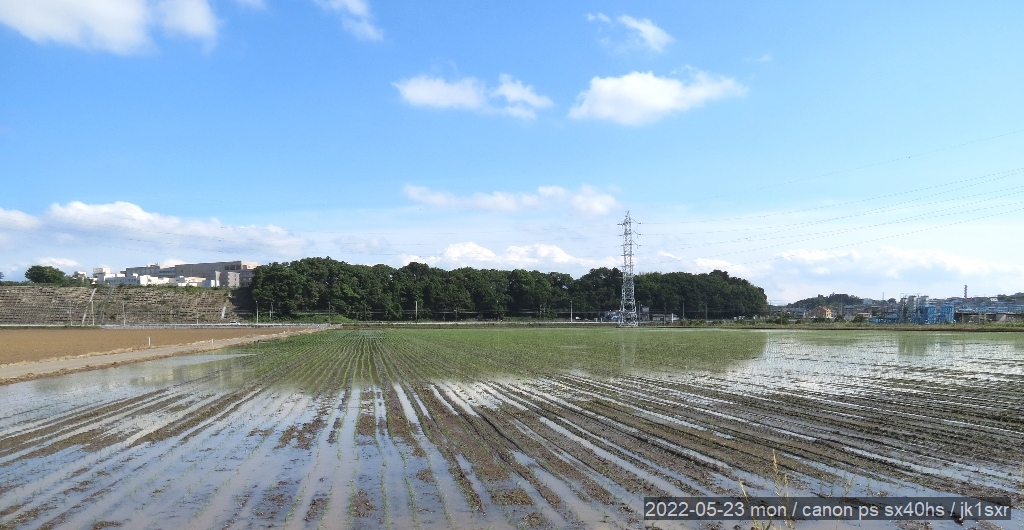
The machines I frequently see around the usual bicycle lane these days are probably called ta-ue-ki (rice seedlings planting machine).
They are all naked with bare minimum mechanism, just enough to achieve their functions, like handicrafts of children.
This is probably because they have to be light, otherwise they can not move on the mud, and if they leave deep ruts, the seedlings can not be properly planted.
As their use is only once a year, there shall be no one who purchases them by falling in love with the design.
The machine grabs a piece or two of fragile and skinny seedlings of about 10 cm tall, spreads them about 3 m wide, and goes planting at a speed of man's slow running. Even for the spacious paddy field, the work finishes within a short period of time.
Despite their clumsy looks, they seem to be extraordinary machines.
590. Sijukara this year too
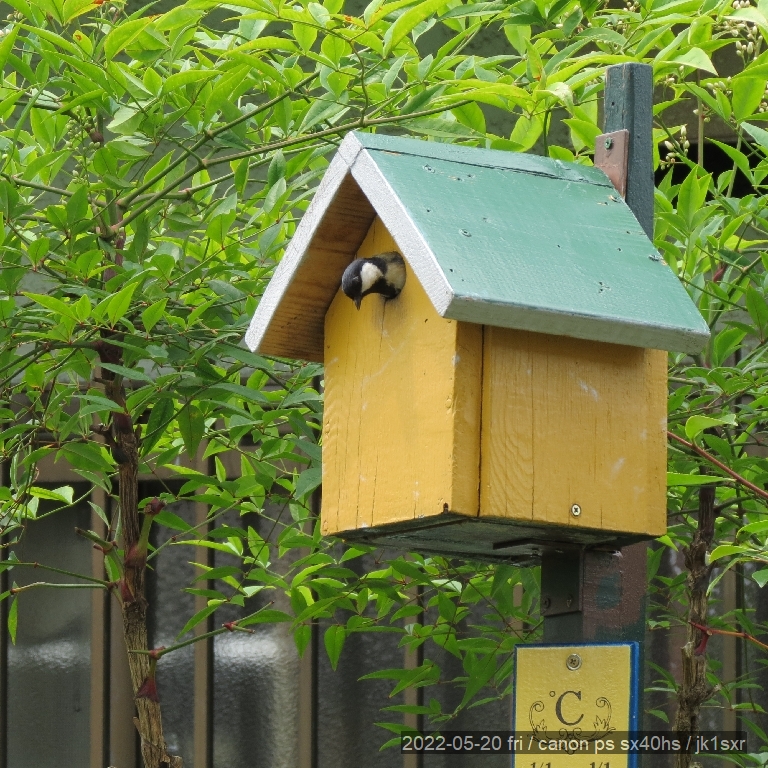 Sijukara here look to be caring eggs at this time.
Sijukara here look to be caring eggs at this time.
Although chicks usually leave the nest in early May, they are late just as the last year.
This couple, in many cases, dives directly into the box without stopping once.
Though such action in flight must be very tricky, they maneuver without any difficulty.
The inlet diameter is 27 mm on a board of 18 mm thick. They go through this hole at a considerable speed.
The distance between the entrance and the back plate is 15 cm only. The speed must be decreased to zero within this 15 cm span. Otherwise, they hit the wall. No such sound at all.
Amazing ability indeed.
599. Daruma
 A sign board I happened to see in the next town.
A sign board I happened to see in the next town."Daruma (Bodhidharma) which had dominated the liquor market in the 60s and 70s.
Also called, "tanuki" (raccoon dog) and "kuro-maru" (black round).
Still around, but utterly far from the past glory.
♬ "Don don din don shubi da don - -" ♬
Well, it must be completely new for young people. It was the CM song which just fit the atmosphere of that time.
Try this one , Suntory's TV commercial "When the night is coming".
P.S.
It is said that
Composer: Kobayasi Asey
Singer: Sairasu Mozurei (spelling must be wrong) / a researcher and a gospel singer, the then Jyouti University (Sophia univ.) professor.
598. A totem pole

 At a square in front of Chiba port tower.
At a square in front of Chiba port tower.Have not seen much recently, though ubiquitous before.
597. Saboten / shaboten
 A saboten started blooming again.
A saboten started blooming again.The word-origin explained in Wiki: Nan-ban-jin# used its sap as soap. Thus, shabon tei (soap stuff).
# Literally means "barbarians from the south", referring to mostly Spaniards and Portugese who visted here for trading in medieval times. They brought many new items into Japan in exchange for silver produced locally.
596. Tractor buff
 A tractor seen at the usual bicycle path this afternoon.
A tractor seen at the usual bicycle path this afternoon.Heard that there are a lot of tractor fans around the world and some are collectors of old machines.
Man-size gear-like tires, heavy-sound-blaring diesel-engine, forward and back both 20-or-so-stage transmission, cabin perched on them.
Looks enough to create many otakus.
595. BELLE G
 Happened to see this at an attraction at a nearby square.
Happened to see this at an attraction at a nearby square.Those who know the name of this Isuzu car must be scarce now.
More than 50 years vintage, but looks still working,
In the car market, there is a category called "GT" which definition is ambiguos, not known if it really exists or not.
It is said this car used that word for the first time in this market.
594. Leaves of what herb?
 Leaves caught my eye at the usual walk with Jiro.
Leaves caught my eye at the usual walk with Jiro.There must be persons who instantly recognize this. But I had no idea at all.
At first, I thought someone played a prank with an ink. But a close look revealed all leaves have the same bat marks.
It is said that;
this is a Mizu-hiki of Tade family, and
the marks disappear around the time when flower spikes appear in the summer.
Another name seems to be;
"Brush cleaning leave of Koubou Daisi#".
#
A priest who established Shingon Buddhist sect in the 9th century.
Well known for his skilled brush works in calligraphy.
Also known as Kuukai.
593. Bass fishing
 Inba marsh today.
Inba marsh today.Bass-fishing boats returned.
Fine weather brought many boats into the marsh. They have to wait for being pulled up.
 An outboard engine at the stern is used up until the fishing point.
An outboard engine at the stern is used up until the fishing point.Coming to the point, the engine is cut off, and the battery-powered screw-propeller at the bow moves the boat gently for fishing.
592. Power transmission lines and radios


A sequel to the previously listed pylons of Tokyo Power.
This is the nearest tower to my place, Nr. 28th, 370 m apart.
The nearby existence of 500 kV power lines naturally brings about the question on the noise issue. In my HF operation, there is no pratical problem.
In fact, there is a person in our area who has long operated HF radio at the place, the 4th house from the 500 kV line.
 This is a summary of the height, distance and elevation angle of large structures around my place (the same is listed in other part of this site).
This is a summary of the height, distance and elevation angle of large structures around my place (the same is listed in other part of this site).As the picture shows, the power line exists 270 m apart from my place. The elevation angle of the grounding wires on top of the tower is 17 degrees seen from my place.
No problem on HF as mentioned.
On VHF/UHF, however, I feel there is an issue.
My experience on V, U is limited only for CW operation via LEO satellites.
For example, there are cases;
when a satellite goes behind the power lines, the signals of Russian stations get disturbed for 10 or 20 seconds.
As there is no problem at the angle close to the horizon, I think, this is the effect of this power line (4 conductors, 3 x 2 = 6 and 2 ground wires) crossing the northern sky at the elevation angle from around 8 to 17 degrees.
591. Ta-ue-ki


The machines I frequently see around the usual bicycle lane these days are probably called ta-ue-ki (rice seedlings planting machine).
They are all naked with bare minimum mechanism, just enough to achieve their functions, like handicrafts of children.
This is probably because they have to be light, otherwise they can not move on the mud, and if they leave deep ruts, the seedlings can not be properly planted.
As their use is only once a year, there shall be no one who purchases them by falling in love with the design.
The machine grabs a piece or two of fragile and skinny seedlings of about 10 cm tall, spreads them about 3 m wide, and goes planting at a speed of man's slow running. Even for the spacious paddy field, the work finishes within a short period of time.
Despite their clumsy looks, they seem to be extraordinary machines.
590. Sijukara this year too
 Sijukara here look to be caring eggs at this time.
Sijukara here look to be caring eggs at this time.Although chicks usually leave the nest in early May, they are late just as the last year.
This couple, in many cases, dives directly into the box without stopping once.
Though such action in flight must be very tricky, they maneuver without any difficulty.
The inlet diameter is 27 mm on a board of 18 mm thick. They go through this hole at a considerable speed.
The distance between the entrance and the back plate is 15 cm only. The speed must be decreased to zero within this 15 cm span. Otherwise, they hit the wall. No such sound at all.
Amazing ability indeed.
Copyright © 2013 JK1SXR/m.abe. All Rights subject to common sense.